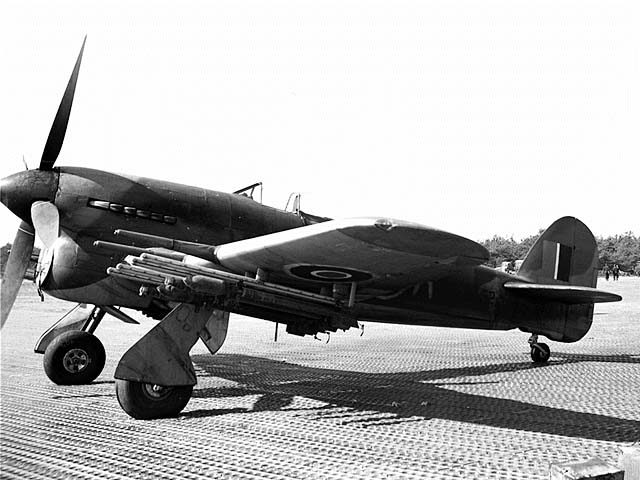
Tiffie
on the ramp. Note the "Summerfelt" landing
strips used to prevent the aircraft from sinking into the soil. Photo
source: Canadian
Air Force site
|
Conditions
improved sufficiently an the afternoon of the 4th to permit the pilots to
make the customary sector reconnaissance’s over the new locale.
As F/O A.C. Clarke came in to land on the wire runway he appeared to
hit the slipstream of the aircraft in front. This, coupled with a very
strong wind, caused the Typhoon to stall, hit the end of the runaway and
cartwheel on its back.
Andy received serious injuries to his neck which caused partial
paralysis from the waist down. Five other pilots were lost at this time when
F/Os E.J. Allen, J. Kalen, C.C. Leigh, W.J. Mahagan and N.H. Rassenti were
posted to the pool (83 Group Support Unit) at Redhill; all except Leigh and
Mahagan returned to the Squadron
six weeks later. On the other hand, the ground staff was strengthened by the
posting in of a medical officer, F/L D.J. Moffat, and an adjutant, F/O M.
Harrison, both of whom remained with No. 439 until the end of hostilities.
|
While
waiting for the weather to become operational the pilots took part in
an evasion exercise, studied army organization,
watched the practice loading of invasion barges, and tried their hand
at flying the half-pint (2) Auster which had been allotted to the Squadron.
The Squadron's
identification letters were 5V so the Auster was labelled 5V1/2, and
nicknamed
"Buster".
This aircraft was described as "a
dinky little job, but with bags of speed that is hard to kill off for
a landing. Quite a treat to fly it!"
|

An
example of an Auster Air Observation Post Photos
source: Canadian
Airforce site
|